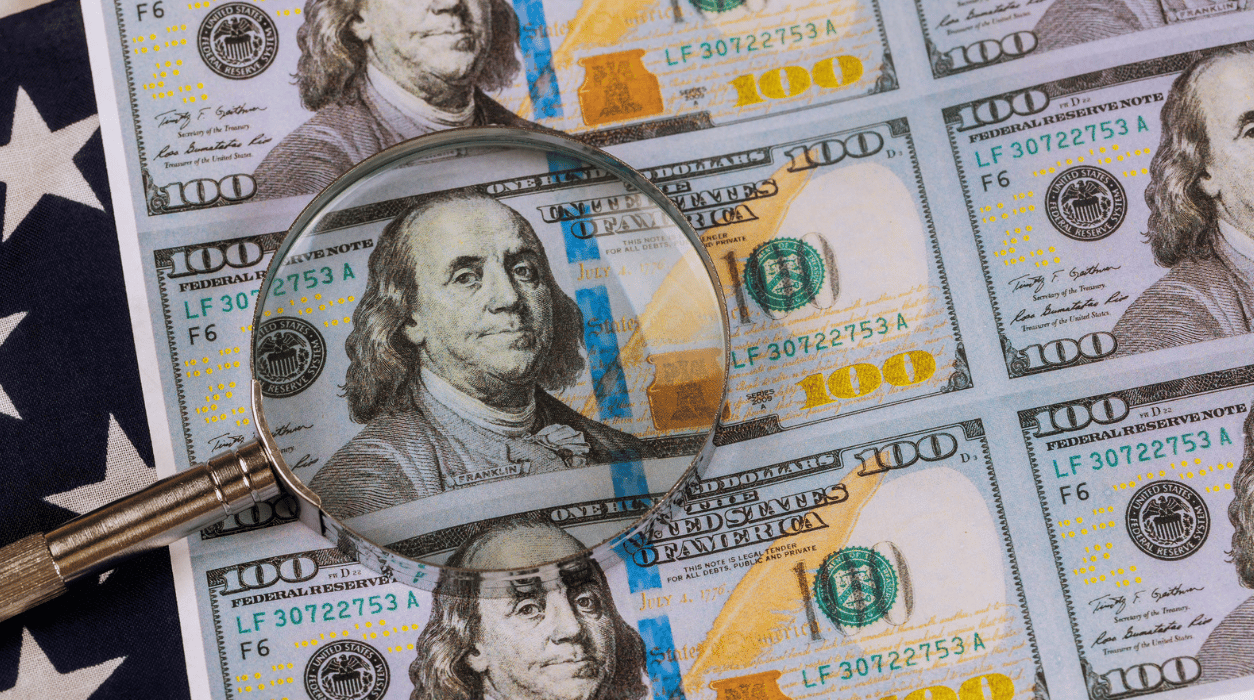
Dealing with counterfeit bills is more common than people realize. Whether a customer hands a suspicious bill to a cashier, or a bank teller comes across a suspect note during a routine transaction, knowing the difference between real vs. counterfeit money is essential for banks and retailers. Being able to detect fake bills not only protects the organization but it also helps maintain trust and integrity in every transaction.
The Federal Reserve plays a critical role in combating counterfeit money to ensure the integrity of U.S. currency. Counterfeiting experts with the Federal Reserve work closely with the U.S. Treasury and the Secret Service to develop and implement advanced security features in currency design to make it more difficult for counterfeiters to replicate. Additionally, the Federal Reserve helps remove counterfeit notes from circulation by providing guidelines and tools for detecting fake money.
This collaborative effort helps protect the value of the U.S. dollar, maintaining trust in the nation’s financial system and ensuring that both businesses and consumers can rely on the authenticity of their cash transactions.
Three simple and effective methods to manually detect counterfeit money
1. Feel the paper
The texture of a bill can be a dead giveaway when distinguishing between real vs counterfeit money. Rub a known authentic banknote between your fingers and then do the same with the suspect bill. Notice any differences? Legitimate currency is printed on special paper that feels distinct from ordinary paper. Additionally, authentic bills often feature areas of raised ink, which are difficult for counterfeiters to replicate.
This basic tactile method is effective for all types of bills, including polymer notes, and is especially useful for identifying fake cash often made in low denominations
Examine the Details
If you’re still unsure, the next step is to visually compare the suspect bill to a known authentic one. Pay close attention to the color tone, intensity, and the quality of the printed details.
What does counterfeit money look like? Often, counterfeit bills have dull or incorrect colors, and the smallest details might appear blurry. Also, check the alignment of the serial numbers—misalignment can be a clear sign of a counterfeit.
3. Tilt the Bill
For a more advanced check, tilt the bill to inspect some of its sophisticated security features. Authentic currency often includes embedded threads, iridescent color-changing inks, watermarks, and holograms. Here’s how to check these features:
- Embedded Thread: Hold the bill up to a light source and look for a dark, solid line that runs vertically through the bill. This thread usually includes characters or numbers that match the bill’s denomination.
- Color-Shifting Ink: Tilt the bill to observe if the ink on certain features changes color. This is a clear indicator of authenticity.
- Hologram: Move the bill to see if a hologram reveals two distinct images with a clear sense of depth.
- Watermark: Ensure that the watermarked portrait is visible from both sides of the bill and matches the printed portrait on the front.
Use Cash Automation Technology for Certainty
While these methods are effective, nothing beats technology when it comes to verifying the authenticity of cash. Cash automation machines with bill validation technology can identify counterfeit bills in seconds by analyzing multiple security features at once.
In a retail setting, cash recyclers take much of the guesswork out of validating bills. But because they are often used for back-office cash management, educating cashiers to spot suspicious cash at the point of sale and establishing procedures for handling these encounters is a more comprehensive approach to ensuring real money is being exchanged.
For banks and credit unions, teller cash recyclers automatically identify suspect bills during cash transactions, prompting tellers to follow their institution’s specific procedures to handle the situation properly and in compliance with regulations. This TCR feature helps to maintain the integrity of the banking system, protect customers and the bank from losses, and aids law enforcement in tracking and reducing the circulation of counterfeit currency.
Cash automation machines with bill validating technology are ideal but knowing how to check if cash is real using manual techniques is valuable for any retail business or banking environment, helping to avoid accepting or distributing counterfeit cash. Contact us to learn more.

